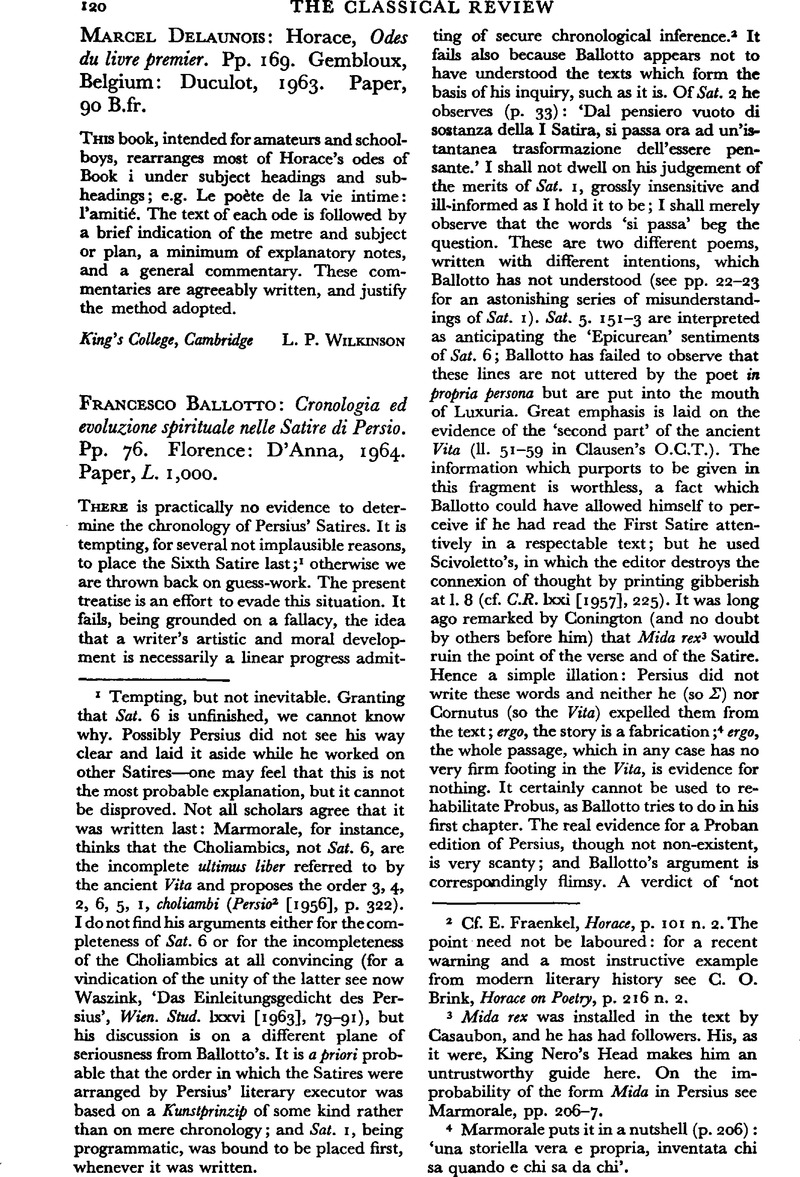No CrossRef data available.
Article contents
Francesco Ballotto: Cronologia ed evoluzione spirituale nelle Satire di Persio. Pp. 76. Florence: D'Anna, 1964. Paper, L. 1,000.
Published online by Cambridge University Press: 27 February 2009
Abstract

- Type
- Short Reviews
- Information
- Copyright
- Copyright © The Classical Association 1965
References
1 Tempting, but not inevitable. Granting that Sat. 6 is unfinished, we cannot know why. Possibly Persius did not see his way clear and laid it aside while he worked on other Satires—one may feel that this is not the most probable explanation, but it cannot be disproved. Not all scholars agree that it was written last: Marmorale, for instance, thinks that the Choliambics, not Sat. 6, are the incomplete ultimus liber referred to by the ancient Vita and proposes the order 3, 4, 2, 6, 5, 1, choliambi (Persio2 [1956], p. 322). I do not find his arguments either for the completeness of Sat. 6 or for the incompleteness of the Choliambics at all convincing (for a vindication of the unity of the latter see now Waszink, , ‘Das Einleitungsgedicht des Persius’, Wien. Stud. lxxvi [1963], 79–91)Google Scholar, but his discussion is on a different plane of seriousness from Ballotto's. It is a priori probable that the order in which the Satires were arranged by Persius' literary executor was based on a Kunstprinzip of some kind rather than on mere chronology; and Sat. 1, being programmatic, was bound to be placed first, whenever it was written.
2 Cf. Fraenkel, E., Horace, p. 101Google Scholar n. 2. The point need not be laboured: for a recent warning and a most instructive example from modern literary history see Brink, C. O., Horace on Poetry, p. 216 n. 2.Google Scholar
3 Mida rex was installed in the text by Casaubon, and he has had followers. His, as it were, King Nero's Head makes him an untrustworthy guide here. On the improbability of the form Mida in Persius see Marmorale, pp. 206–7.
4 Marmorale puts it in a nutshell (p. 206): ‘una storiella vera e propria, inventata chi sa quando e chi sa da chi’.




